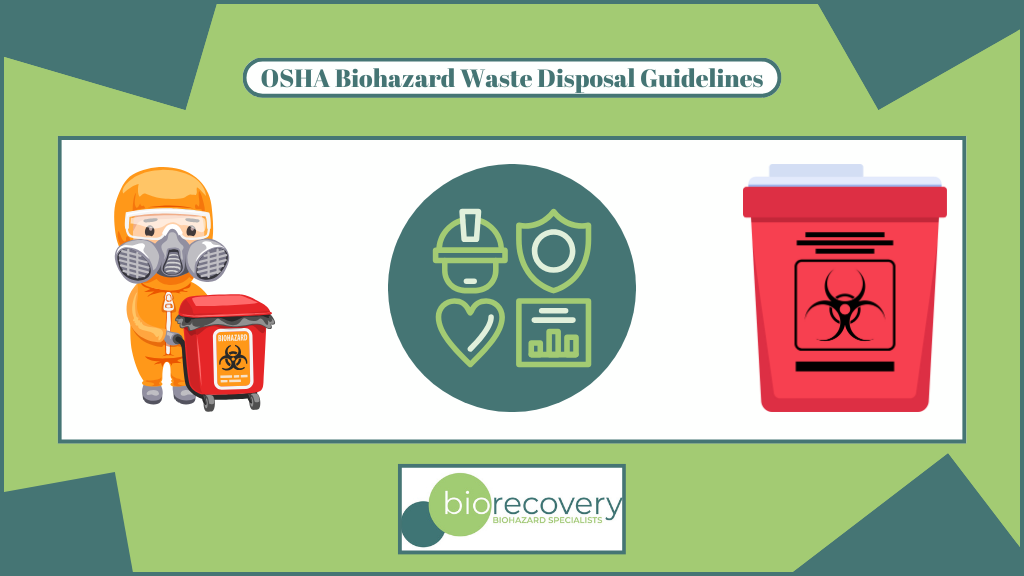The Occupational Safety and Health Administration (OSHA) has established detailed regulations regarding the handling and disposal of biohazardous waste. Understanding the OSHA regulations surrounding biohazardous waste is crucial for businesses and organizations that handle potentially infectious materials. These regulations are in place to protect workers, the public, and the environment from the risks associated with improper disposal of regulated medical waste.
Key OSHA biohazard waste disposal guidelines include:
- Proper segregation and labeling of biohazardous waste
- Use of leak-proof, puncture-resistant containers for storage and transport
- Decontamination or treatment of waste prior to disposal
- Training for employees who handle biohazardous materials
- Implementation of an exposure control plan
Businesses that generate biohazardous waste, such as healthcare facilities, laboratories, and some industrial settings, must comply with these OSHA regulations to ensure the safety of their workers and the community. Failure to do so can result in significant fines and penalties.
Identifying Biohazardous Waste: What Qualifies and What Doesn’t
According to OSHA, biohazardous waste includes any liquid or solid waste that may contain infectious agents and pose a threat to human health. This encompasses a wide range of materials, from used needles and blood-soaked bandages to cultures and stocks of infectious agents.
Some key types of biohazardous waste include:
- Sharps (needles, scalpels, broken glass)
- Microbiological waste (cultures, stocks of infectious agents)
- Blood and blood products
- Pathological waste (human tissues, organs)
- Contaminated personal protective equipment
On the other hand, certain materials do not qualify as biohazardous waste, even if they come into contact with bodily fluids. These include things like used facial tissues, diapers, and other general waste that does not pose an infectious risk. Proper segregation, labeling, and disposal of regulated medical waste is essential to protect workers and comply with environmental regulations.
Implementing OSHA Biohazard Waste Disposal Guidelines
Under OSHA regulations, employers must follow specific guidelines for labeling, storing, transporting, and disposing of biohazardous materials.
Key requirements for OSHA biohazard waste disposal guidelines:
- Biohazard Waste Labeling: All containers, bags, and other receptacles used for biohazardous waste must be clearly labeled with the universal biohazard symbol and the word “Biohazard.”
- Biohazard Waste Storage: Biohazard waste must be stored in leak-proof, puncture-resistant containers that are color-coded or labeled. Containers must be kept closed except when adding or removing waste.
- Biohazard Waste Transportation: When transporting biohazard waste, containers must be placed in secondary containment devices. Vehicles used for transport must be properly placarded.
- Biohazard Waste Disposal: Biohazard waste must be disposed of through an approved medical waste disposal service. Waste bags must meet specific requirements for thickness and color-coding.
Adhering to these OSHA standards for biohazard waste handling is essential for protecting workers, the public, and the environment from potential exposure to infectious materials.
Training Employees on Biohazard Waste Handling
Biohazard waste training should cover topics like identifying biohazardous materials, using personal protective equipment (PPE), safely containing and transporting waste, and proper disposal methods. Employees must understand OSHA’s Bloodborne Pathogens Standard and learn techniques to minimize exposure risks.
Hire OSHA Compliant Professionals
Investing in robust biohazard waste compliance not only fulfills legal obligations but demonstrates a commitment to workplace safety and social responsibility. Prioritizing these measures can help organizations avoid costly penalties while upholding their duty of care.
Adhering to OSHA biohazard waste disposal guidelines is essential for ensuring safety, compliance, and the well-being of everyone involved in a biohazard cleanup. At Bio Recovery, we are fully committed to following these stringent regulations, providing you with peace of mind that your biohazard waste is handled with the utmost care and professionalism.
If you need expert biohazard cleanup services, trust the team with over 25 years of experience—contact Bio Recovery today to ensure your environment is safe and compliant.
